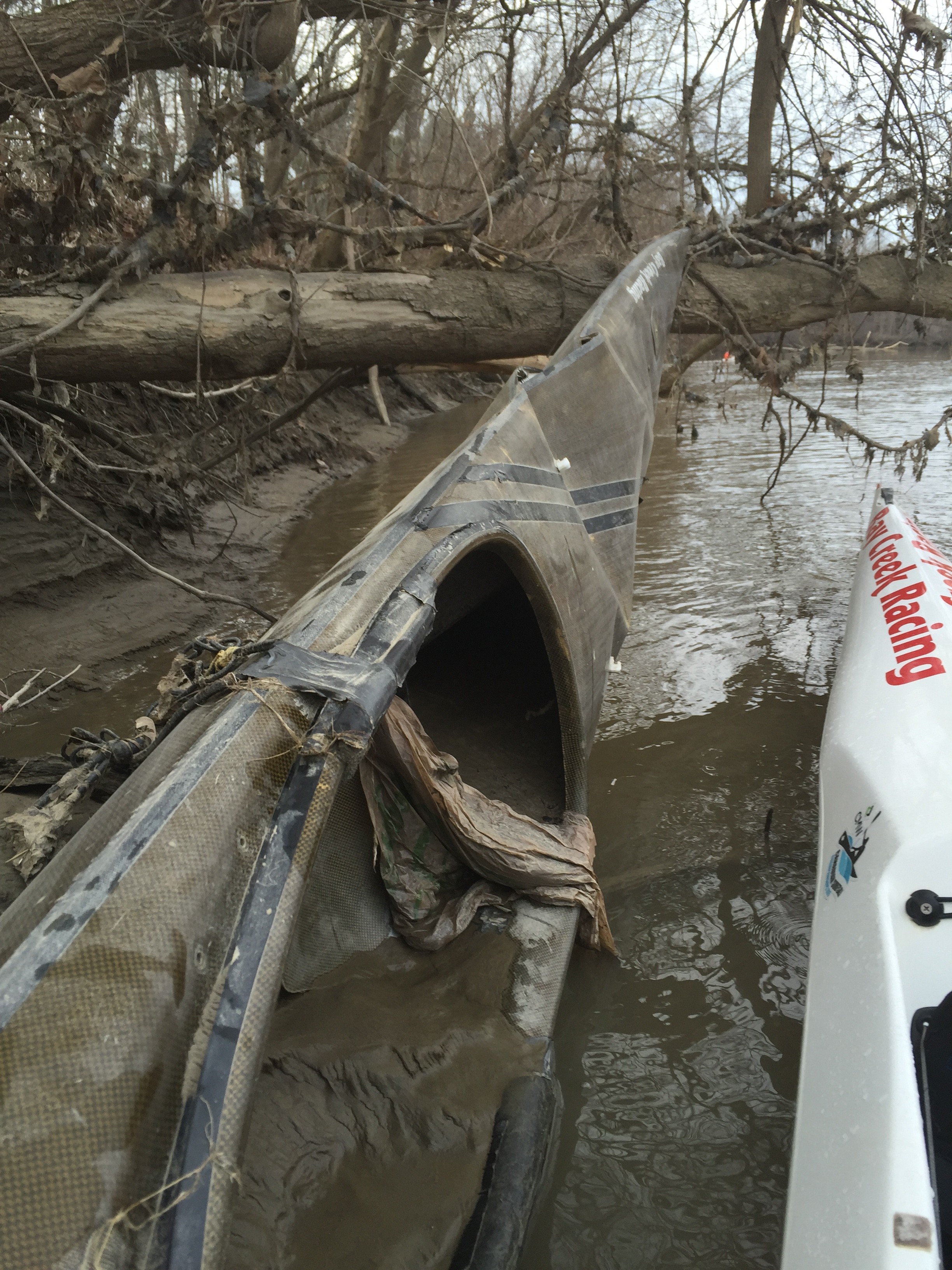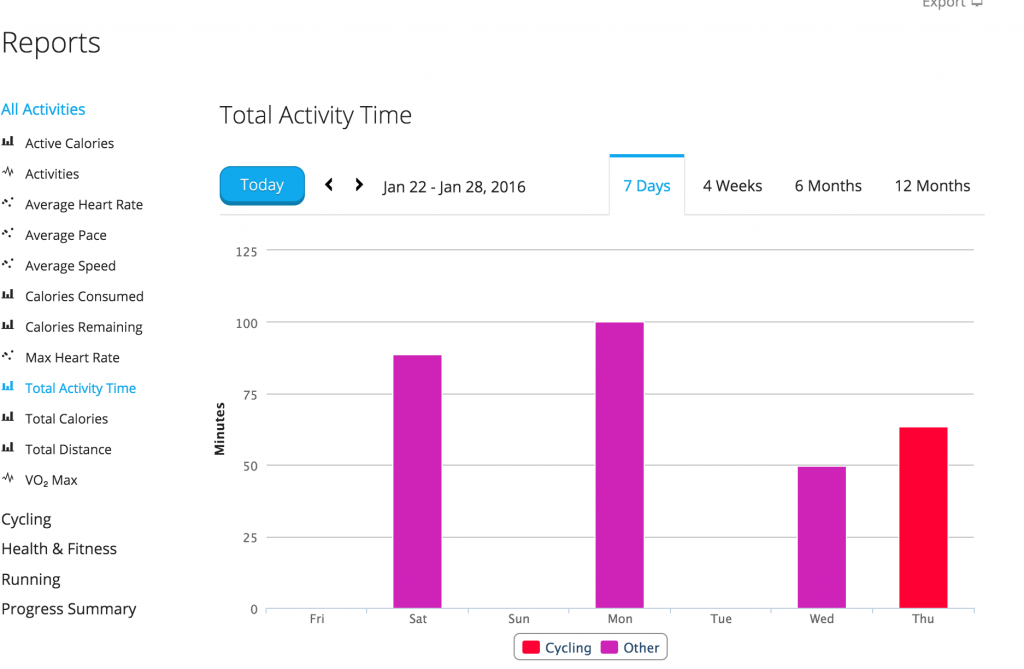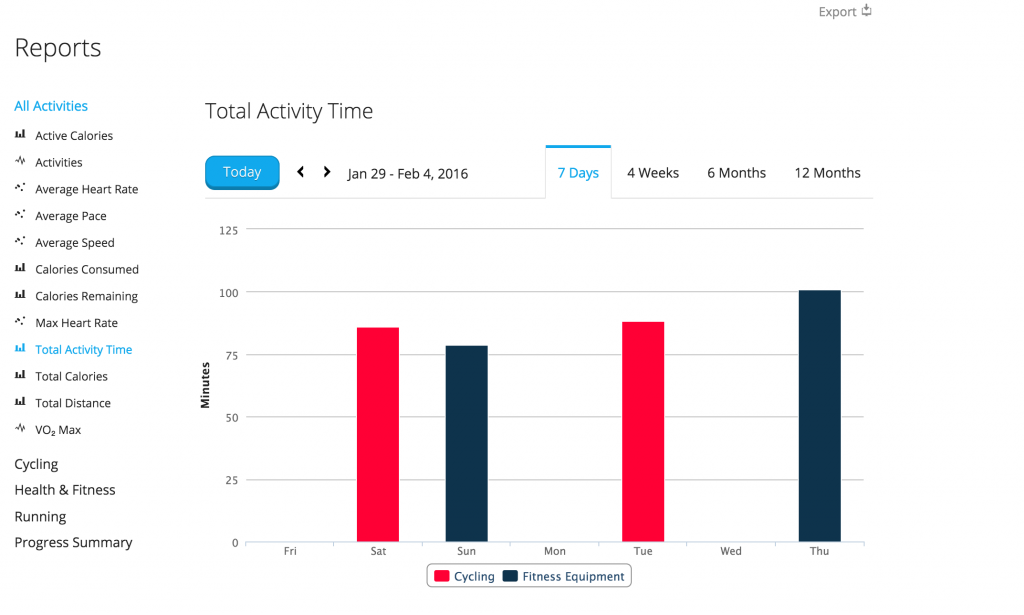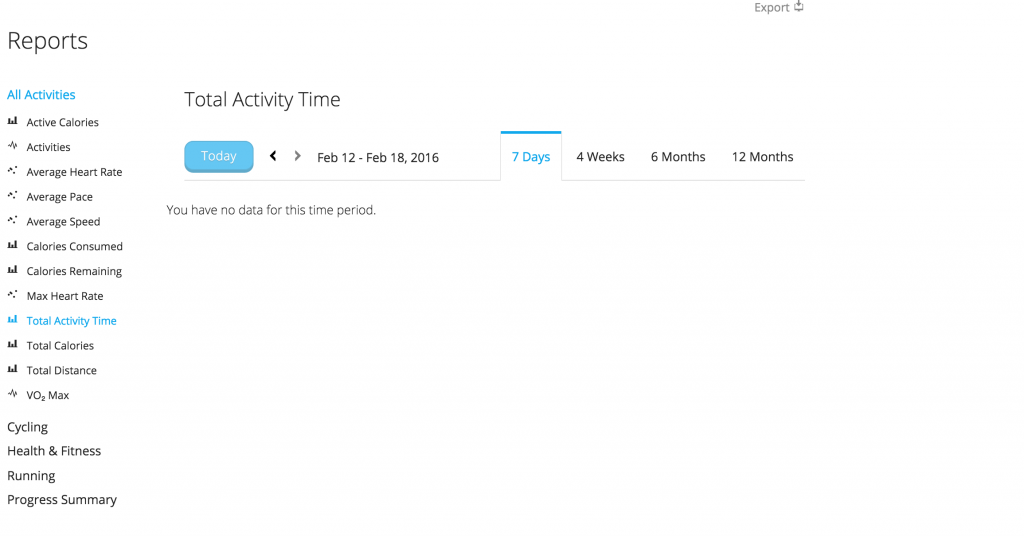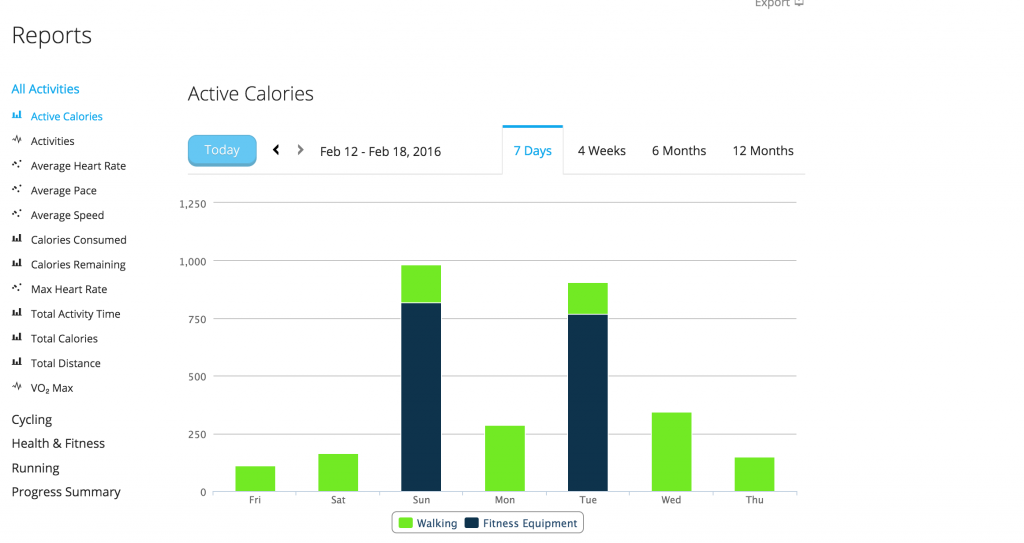Today is a tale of one smart thing and one stupid thing.
- Smart thing: I got a dry suit.
- Stupid thing: I got too close to the ice blocking the river
Let me back up a bit.
Yesterday (Saturday), Jim and I paddled on the river, and when we got to where the river was completely blocked with ice, we could see it a long way off and turned well before it. Jim remarked that since it was going to remain well above freezing, it should be clear further down today (Sunday). And sure enough, it was.
We were cruising along pretty nicely, there was ice on both river banks but plenty of room in the middle. We were both warm and dry in our Kokatat semi-dry suits and enjoying life. There were a few chunks of ice in the river, and nothing bigger than a foot or two in any dimension, and mostly so thin that you could bash through them in your boat. I was in my West Side Boat Shop Thunderbolt, which has become my “beater” boat for spring paddling because it’s so tough and stable and because I don’t really care much what happens to it.
Up ahead, we could see what looked like a very large floe in the middle of the river. It was only about 10 or so feet long, and I couldn’t tell if it was moving with the current. But we both agreed to head over to the right side since that looked clearer. But as we got nearly to the “gap”, I crunched up partially onto ice that was just below the surface of the water. Jim and I both back-paddled. He had no problems turning around, because his Epic V8 has an understern rudder with lots of rudder authority, but my boat is longer and has an overstern rudder, so it doesn’t turn anywhere near as well. I misjudged how far back I had to back-paddle before I started turning, and I ended up crunching sideways into the ice.
Now I’ve got a problem, because I need to paddle on the right side to turn, but there’s ice there. And the ice is pretty thin, so you can’t push down on it very hard. I don’t know exactly how it happened – either the ice gave way when I was trying to push it with the paddle, or I was trying to push myself away from the ice with my hand and I overbalanced. Either way, I ended up in the water. Immediately I realize that my dry suit is working perfectly, and no water is getting in, but I also realize that the cold water is still pulling heat out of my body. Also, I’ve freed my hands from my pogies and they’re utterly freezing. The boat is upstream of me, and it’s bumping into me. I ignored it because I know that there is no way to remount it until I can get onto solid(ish) ground. I tried pulling myself along the edge of the ice to get closer to the shore, but the ice kept breaking. I also tried pulling myself up onto it, but again, as soon as I got my upper torso onto it it would break. The current was pulling my feet under the ice and I was starting to get concerned. Jim had been trying to rescue my boat, but I called to him that I was having problems and he dropped the boat and came over. He couldn’t get in too close, because he didn’t want to end up in the same predicament, but he backed towards me, and as he got close enough I left my paddle up on the ice and swam over. I grabbed the handle on the back of his V8 and held on for dear life.
My hands were frozen solid – I kept thinking of Howard Blackburn purposely freezing his hands to the oars so he didn’t let go even though he couldn’t feel them. I was in a similar state – I was afraid to adjust my hand position for fear of not being able to grab back on. Jim paddled furiously, and I kicked, but we seemed to be just barely moving up stream. Jim’s goal was a bridge that was a hundred meters or so upstream of where I’d fallen in, but it seemed like the far side of the moon to me. Every now and then my neck would go below the water and a small trickle of water would come in – that’s the difference between a semi-dry and a full dry suit – but it wasn’t enough to chill me any more than I was. Actually, truth be told, besides my painfully cold hands, the rest of me wasn’t feeling cold. Maybe I was too worried about goal to think about it.
After what seemed like forever, we got to the bridge. Jim was trying to get around to the upstream side, but there was ice in close to it. Also, the current got really fast around the abutment because the water flows around it, and with me on the back acting like a gigantic rudder he didn’t have a lot of maneuverability. At one point he suggested I swim for it, so I reluctantly let go of the boat and swam – I wasn’t moving any faster than he had been towing me, and my hands were now fully in the water. But I grabbed the nose of his boat, and then the concrete of the nose of the abutment, and managed to pull myself around the nose and get into shallower water. And once I was in the shallow water, I was able to break the ice and climb up onto the bank. I think we were both pretty exhausted at that point.
Once I was up on the bank, Jim headed back to see if he could rescue my paddle and/or my boat. My immediate problem was my hands – now that they were out of the water and warming up a bit, they were extremely painful. Just unbelievable amounts of pain. Last time I felt something this bad was the time in Sudbury when I got frostbite on my penis. I wanted to put my hands in my groin or my underarms to warm up, but I couldn’t grasp the dry suit zipper cover. I knew that even if Jim managed to rescue my equipment, I wouldn’t be able to get back to the put-in under my own steam because I didn’t think I could hold the paddle. I looked downstream and saw Jim had my paddle, but he didn’t have a place to stow it and so it kept digging into the water and falling out. He left it, and I guess he tried to reach the boat but couldn’t reach it safely.
He came back up to me and we briefly discussed what to do next. The bridge I was under was the New York State Thruway (I-90) so I couldn’t very well get picked up there. And of course, for the first time in a long time I forgot to bring my phone so I couldn’t call anybody. Jim pointed out a house on the other side of the river, and he said he was going to look for a rope. I walked over the bridge and the man in the house came out wearing a loose bathrobe and boxer shorts, and a woman was in the background looking equally casually dressed, so I worried that I interrupted something. Anyway he let me use his phone, but suggested I stand outside to do the calling because several dogs were barking at me. But of course since I was calling from a number Vicki didn’t know, she didn’t answer. (We’ve been getting a lot of calls from local numbers that are usually the “we’re calling from credit card processing” scams, so we don’t usually answer when unfamiliar numbers show up in the caller display). I left a message, hoping that she’d call back. But by then Jim was out in the water just offshore of this place asking for a rope. The guy and I went to look for one, but by the time we got back it was obvious there was no hope – you could see my boat was sitting in the water nose down with the stern in the air at about a 70 degree angle from the horizontal. Obviously the boat had tipped over and bow had filled with water, which meant that even if Jim could get a rope on it, it would be impossible to tow with several hundred pounds of water in it – West Side Boat Shop boats don’t have bulkheads, so when water comes in, they’re freaking heavy. Jim reported that he could also see my paddle had slipped under the ice. Maybe somebody will find them when they pop out the other side of the ice floe, but it’s more likely somebody will wonder what the strange shape is going over the weir near Dinosaur BBQ in a few weeks.
Craigslist “Lost kayak” listing
Anyway, Jim said he’d go back and get his car and come back and pick me up. I told the guy in the house that I’d walk to the end of the driveway (because I was already feeling like I was interrupting their Sunday afternoon). And once I got to the end of the driveway I kept walking to keep warm.
It’s now 3 or 4 hours later. My fingertips are still all pins-and-needles even though they’re not cold – hopefully it’s nothing permanent, because this is really annoying when typing.
My take away from all this? Well, I haven’t paddled in icy rivers in a number of years because I was afraid of what would happen if I got sucked under the ice. Today proved that just because I had on a dry suit, that’s still a major danger. I got over confident and got into real danger because of it. The dry suit is going to be great in the spring and fall – and if we do a downwinder at the TC Surfski Immersion weekend, but I’m not going to paddle near river ice ever again.

